Five years ago, my HuffPost with the truth on how the FBI’s obsession with “Getting Gotti” caused them to miss a chance to stop 9/11.
By Peter Lance May 25th, 2016 GMT. As we wait for the White House to decide on the release of 28 pages redacted from the 9/11 Joint Inquiry’s report and the accused “mastermind” of the attacks Khalid Sheikh Mohammed awaits a trial that may never come, consider this piece that I filed on the Huffington Post five years ago today with proof of how, if the FBI had connected the dots on Sphinx Trading, a mailbox-check cashing story in Jersey City, located a few floors down from the mosque of convicted “Day of Terror” perpetrator blind Sheikh Omar Abdel Rahman, they could have been onto the “planes as missiles” plot in the summer of 2001.
Huff Post Politics May 25th, 2011 By Peter Lance: After whacking “Big Paul” Castellano and taking control of the Gambino Family in 1985 John Gotti set up headquarters at The Ravenite Social Club – located on the ground floor of a five story brick building at 227 Mulberry St. in Little Italy. Over the next seven years, the FBI’s York Office (NYO) conducted an around the clock surveillance of the site: taking pictures of The Dapper Don in the street outside the club from a plant or “perch” across the street, bugging his phones and planting dozens of surveillance devices in the building owned by Gambino wiseguy Joseph “Joe The Cat” LaForte. 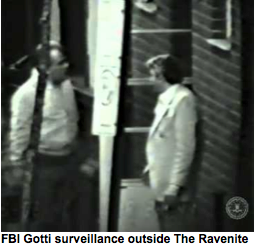
By 1997 “getting Gotti” became the “top investigative priority” of the NYO and the personal obsession of Special Agent Bruce Mouw who called the Gambino boss as “a stone cold killer.” The investigation cost the Feds millions, but during three separate prosecutions in Federal Court “The Teflon Don” eluded conviction. It wasn’t until Mouw and the FBI’s Special Operations Group (SOG) were able to install mikes in the apartment of Netti Cirelli, who lived upstairs from the club, that they caught Gotti in the incriminating conversations with Sammy “The Bull” Gravano that finally brought him down in 1992. It was a victory that cemented the reputation of the FBI as the law enforcement agency that “always gets its man.”
This story is very well known. What’s not known — and will be revealed in detail in my new HarperCollins book Triple Cross — is that the same New York Office of the FBI – also known as the bin Laden “office of origin,” blew an opportunity in the summer of 2001 – to stop the 9/11 “planes as missiles” plot dead in its tracks. How? by merely applying the same dogged surveillance techniques across the Hudson in Jersey City to an al Qaeda hot spot that one former FBI informant had called “a nest of vipers.”
The address was 2828 Kennedy Boulevard in Jersey City; the location of Sphinx Trading, a check cashing and mailbox store that does millions of dollars in wire transfers each year between New Jersey and the Middle East. Sphinx was incorporated on December 15th, 1987 by Waleed al Noor and Mohammed El-Attris, an Egyptian. The store was located only four doors down from the al-Salam mosque, presided over by blind Sheikh Omar Abdel Rahman (OAR). Rahman runs like a hot circuit cable through the epic story of FBI failures on the road to 9/11.
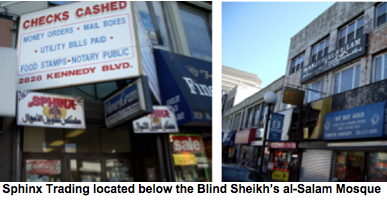 Convicted by former Assistant U.S. Attorney Patrick Fitzgerald in 1995 along with 9 other members of a “jihad army” for seditious conspiracy, OAR was the leader of the hyper-violent al Gamma’a Islamyah (Islamic Group) responsible for the Luxor Massacre in 1997. He was also spiritual head of the Egyptian Islamic Jihad (EIJ) the terror group headed by Osama bin Laden’s number two: Dr. Ayman al Zawahiri.
Convicted by former Assistant U.S. Attorney Patrick Fitzgerald in 1995 along with 9 other members of a “jihad army” for seditious conspiracy, OAR was the leader of the hyper-violent al Gamma’a Islamyah (Islamic Group) responsible for the Luxor Massacre in 1997. He was also spiritual head of the Egyptian Islamic Jihad (EIJ) the terror group headed by Osama bin Laden’s number two: Dr. Ayman al Zawahiri.
Not only was the Sheikh’s cell responsible for the first attack on the WTC in 1993, but the 1998 African Embassy bombings and the October, 2000 attack on the U.S.S. Cole were committed in his name. OAR was so important to the al Qaeda leadership that the infamous Crawford Texas, Presidential Daily Briefing of August 6th, 2001 referenced a 1998 intelligence report of a plot by bin Laden to hijack planes to free him. A similar report was contained in a PDB to Bill Clinton in 1998. So the NYO “office of origin” had good reason to focus on the dingy gray three-story building at 2824 Kennedy Boulevard that also housed what the Feds called “The Jersey Jihad Office.” 
AL QAEDA’S MASTER SPY
One of the most astonishing revelations in my five year investigation into the FBI’s handling of the war on terror was that Bureau agents knew as early as 1991 that Sphinx Trading was the location of a mailbox used by El Sayyid Nosair. A Prozac popping Egyptian-born janitor, it was Nosair who spilled the first al Qaeda blood on U.S. soil on the night of November 5th, 1990 when he gunned down Rabbi Meier Kahane, founder of The Jewish Defense League. The Jerusalem Post covered my findings on the Kahane murder in a page one story in 2010. Nosair had been trained by the principal subject of Triple Cross: Ali A. Mohamed, an ex Egyptian Army Major who had by then succeeded in penetrating the CIA in Hamburg Germany in 1984.
Then after slipping past a Watch List and entering the U.S. a year later, Mohamed enlisted in the U.S. Army where he reached the rank of E-5 and got himself assigned to the highly secure JFK Special Warfare Center (SWC) at Fort Bragg, N.C. — the advanced training school for officers of The Green Berets and Delta Force. It was members of Mohamed’s radical Egyptian Army unit who had gunned down Anwar Sadat in 1981 and his C.O. at Bragg likened the chances of an ex-Egyptian Army officer with that kind of pedigree ending up at the JFK SWC with winning the Powerball Lottery. 
On weekends Mohamed would travel up to New York and stay with Nosair -bringing along TOP SECRET memos he’d stolen from the SWC including the location of all Special Operations units worldwide – a treasure trove of intel that made its way to the al Qaeda leadership.
On four successive weekends in July, 1989, during the tenure of Bush 41, Ali’s trainees drove out from the al Farooq Mosque on Atlantic Avenue in Brooklyn (another OAR venue) to a shooting range in Calverton township on Long Island. There they spent hours firing AK-47’s, handguns and other semi-automatic weapons. How do we know this? Because every weekend these “M.E.’s” or “Middle Eastern” men as they were known in Bureau speak were photographed by the Special Operations Group, the same unit that “Got Gotti” at the Ravenite Social Club.
Of the Ali Mohamed trainees photographed by the FBI half an hour above the Hamptons that hot July of ‘89, three were later convicted in the WTC bombing, Nosair, was convicted in the Kahane assassination and a third U.S. Black Muslim was convicted with the Blind Sheikh and Nosair in the plot to blow up the bridges and tunnels into Manhattan in 1995.
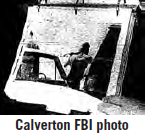 Billed as the Day of Terror case, it was presided over by U.S. Attorneys Andrew McCarthy and Patrick Fitzgerald. As proof of their awareness that OAR’s “jihad army” was an effective al Qaeda cell, Fitzie, as he was known, named 173 unindicted co-conspirators including Osama bin Laden, his brother-in-law Mohammed Jamal Khalifa, and Ali Mohamed – who by now was operating a sleeper cell in Silicon Valley. Also named on that list was Waleed al-Noor the co-incorporator of Sphinx Trading – proof that the Feds still had the Jersey City mailbox store on its radar.
Billed as the Day of Terror case, it was presided over by U.S. Attorneys Andrew McCarthy and Patrick Fitzgerald. As proof of their awareness that OAR’s “jihad army” was an effective al Qaeda cell, Fitzie, as he was known, named 173 unindicted co-conspirators including Osama bin Laden, his brother-in-law Mohammed Jamal Khalifa, and Ali Mohamed – who by now was operating a sleeper cell in Silicon Valley. Also named on that list was Waleed al-Noor the co-incorporator of Sphinx Trading – proof that the Feds still had the Jersey City mailbox store on its radar.
WORKING FOR AL QAEDA AND THE FBI
What isn’t known and will be revealed for the first time in Triple Cross was that Ali Mohamed had been acting as an FBI informant on the West Coast since 1992 – a year before the WTC bombing carried out by the same cell members he’d trained. More amazing, the revelation that in 1993 Ali had confessed to his hapless West Coast “control” agent John Zent that he was working for bin Laden and had helped set up al Qaeda training camps for jihadis in Khartoum. He’d also admitted that he’d provided al Qaeda members with anti-hijacking and intelligence training in Afghanistan.
If anyone in the bin Laden “office of origin” had been inclined to connect the dots, that single statement to a Special Agent in the San Francisco office should have set off alarm bells at 26 Federal Plaza – home of the FBI’s NYO. But it didn’t. Worse, when Mohamed was captured by alert Royal Canadian Mounted Police operatives in 1993 while attempting to smuggle al Qaeda terrorist into the U.S. from Vancouver, it was Special Agent Zent who vouched for Ali – effectively springing him from the custody of the Mounties. After that, on the orders of Mohamed Atef, al Qaeda’s military commander, Ali went to Nairobi where he took the pictures of the U.S. Embassy that bin Laden personally used to locate the suicide truck bomb that exploded five years later in August 1998. Along with simultaneous truck bombing in Tanzania 224 people died and 4,000 more were injured.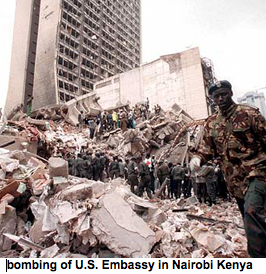
THE FBI COULD HAVE STOPPED THE EMBASSY BOMBINGS
Using evidence from the SDNY court cases, interviews with current and retired Special Agents and documents from the FBI’s own files, I prove in Triple Crossthat Patrick Fitzgerald and Squad I-49 in the NYO could have prevented those bombings – not just by getting the truth from FBI informant Ali Mohamed, but by connecting him to Wadih El-Hage, one of the Kenya cell leaders. How would the Feds have done that? Easily.
They’d had wiretaps on El-Hage’s Kenyan home since 1996. In August 1997, a year before the bombings, Special Agent Dan Coleman (of I-49) had searched El-Hage’s house where he’d found Ali Mohamed’s U.S. address and phone number. In fact, Fitzgerald himself had a face to face meeting with Mohamed in Sacramento, California in October 1997.
At that meeting Mohamed boldly told Fitzie that he “loved” bin Laden and didn’t need a fatwa to attack the U.S. This “stone-cold” killer who had moved bin Laden and his entire al Qaeda entourage from Afghanistan to Khartoum in 1991 and trained the Saudi Billionaire’s personal bodyguards in 1994 – then told Fitzgerald and other I-49 FBI agents including Jack Cloonan that he had dozens of al Qaeda sleepers that he could make operational on a moment’s notice and that he himself could disappear at any time.
Then, After Mohamed walked out on him, Fitzgerald turned to Cloonan and declared that Ali was “the most dangerous man” he’d ever met and insisted, “We cannot let this man out on the street.” But he did and ten months later in August, 1998 the bombs went off in Africa – delivered by another cell that Ali had helped train. It took Fitzgerald another month before he arrested Mohamed on September 10th bringing his 14 year terror spree to an end. 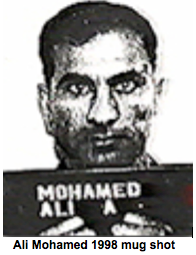
The immediate threat to the American people from Ali may have ended, but not his threat to the FBI and the Justice Department. You see, Ali, aka “Amiriki” or “Ali the American,” was a one-man 9/11 Commission capable of ratting out the Feds on how he had eaten their lunch for years – how the two bin Laden “offices of origin” in the NYO and the SDNY where Fitzgerald was head of Organized Crime and terrorism – had been outgunned by bin Laden and al-Zawahiri dating back to that Calverton, L.I. surveillance in 1989.
Fearful of what he would say if put on the stand and subjected to cross examination by defense lawyers in the upcoming Embassy bombing, Fitzgerald made sure that Ali was hidden away under a John Doe warrant. Finally, by October, 2000 Fitzie had cut a deal allowing the master spy to cop a plea and escape the death penalty.
In the end, Fitzgerald made his bones as the Justice Department’s top al Qaeda buster by convicting El Hage and several other relatively minor bomb cell members. in U.S. vs. bin Laden in 2001. But the real “mastermind” of the Embassy bombings skated. Mohamed was allowed to slip into the security of custodial witness protection where he remains today – the greatest enigma of the war on terror.
SPHINX TRADING AND THE 9/11 PLOT
All of this brings us full circle back to the big question: why should we care? What does it matter if an al Qaeda spy turned CIA asset, U.S. citizen, active duty Army sergeant and FBI informant was able to operate with virtual impunity for years, right under the noses of the best and the brightest in the FBI and DOJ?
Because Ali Mohamed was a metaphor for the dozens and dozens of counterterrorism failures by the NYO and SDNY on the road to 9/11 – while agents in the New York office like Bruce Mouw remained so obsessed with bringing down “The Dapper Don.” Worse, at some point – I fix the date in 1996 – the evidence in Triple Cross shows that officials like Fitzgerald began suppressing evidence that might have proven embarrassing to the Bureau.
Much of it was contained in dozens of FBI 302 memos that can be examined by going to my website. This treasure trove of intelligence was passed to the FBI, ironically, by a wiseguy name Greg Scarpa Jr. locked up in the cell next to WTC bomber and 9/11 plot mastermind Ramzi Yousef in the MCC – federal jail in Lower Manhattan. It was Yousef’s uncle Khalid Shaikh Mohamed (KSM) who merely executed his nephew’s “planes as missiles” plot after Ramzi’s capture in 1995. 
Among those 302’s, a warning in December, 1996 of a plot by bin Laden (aka Bojinga) to hijack planes to free the blind Sheikh and the convicted defendants in the 1993 WTC bombing and “Day of Terror” trials. the identical threat warning that was to appear in PDB’s to Clinton in ‘98 and Bush 43 ‘01. Also, evidence of an active al Qaeda cell operating in New York City in 1996.
AL QAEDA MEETS THE MOB
But all of that intel got flushed by Patrick Fitzgerald and other DOJ officials in order to suppress a scandal in the NYO involved former Supervisory Special Agent R. Lindley DeVecchio. Lin or “the girlfriend” as he was called by Scarpa’s father – a notorious Colombo Family killer – had been the target of a 1994 FBI internal affairs (OPR) investigation that threatened to derail the 60 remaining Colombo War cases in the (EDNY) Brooklyn. So, as I reported first in my last book COVER UP, Fitzgerald and other DOJ officials — including current FBI General Counsel Valerie Caproni – entered into an ends/means decision to discredit the younger Scarpa, bury the Yousef intel (falsely calling it a “hoax” and a “scam’) and allowing DeVecchio to retire with a full pension. They did this after he’d taken “the Fifth” and answered “I don’t recall” more than 40 times after a grand of immunity – something that would have landed any other U.s. citizen in jail for contempt.
I’d told that tangled story of “The G-Man and The Hit Man” for the first time in Cover Up published in 2004. A year later, the deputy head of the Rackets Bureau in the Brooklyn D.A’s office met with me. Later, armed with evidence supplied by forensic investigator Angela Clemente they empanelled a grand jury. On March 30th 2006 DeVecchio was indicted on four counts of second degree homicide stemming from his alleged “unholy alliance” with Scarpa Sr.
 But it was the desire by Federal officials in 1996 to bury the DeVecchio scandal and preserve those Colombo War cases that led to their ends/means decision to ignore all of that evidence from Ramzi Yousef to Greg Scarpa Jr. The belief that somehow the Mafia was more of a threat to New York than al Qaeda — that caused the FBI to let their guard down on the bin Laden threat.
But it was the desire by Federal officials in 1996 to bury the DeVecchio scandal and preserve those Colombo War cases that led to their ends/means decision to ignore all of that evidence from Ramzi Yousef to Greg Scarpa Jr. The belief that somehow the Mafia was more of a threat to New York than al Qaeda — that caused the FBI to let their guard down on the bin Laden threat.
That’s the only explanation I’ve been able to come up with to understand their stunning inability to keep an eye on Sphinx Trading.
There is now little doubt that if the Feds had devoted as much energy to a surveillance of Sphinx as they had to the Ravenite Social Club, they would have been in the middle of the 9/11 plot months before Black Tuesday. Because in July of 2001, Khalid al-Midhar and Salem al-Hazmi got their fake I.D.’s delivered to them in a mailbox at the identical location the FBI had been onto in the decade since El Sayyid Nosair had killed Meier Kahane. The man who supplied those fake ID’s that allowed al-Midhar and al-Hazmi to board A.A. Flight #77 that hit the Pentagon, was none other than Mohammed El-Attriss the co-incorporator of Sphinx with Waleed al-Noor – whom Patrick Fitzgerald had put on the unindicted co-conspirators list along with bin Laden and Ali Mohamed in 1995.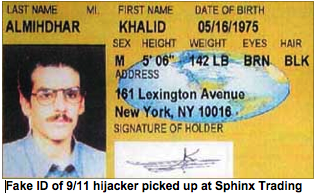
THE BIN LADEN BRAIN
How was it that Fitzgerald, the man Vanity Fair described as the bin Laden “brain,” possessing “scary smart” intelligence, had not connected the dots and ordered the same kind of “perch” or “plant” to watch Sphinx that the Bureau had used against Gotti? Which “stone cold” killer was more a threat to the security of New York City? The Teflon Don or bin Laden’s master spy who cut his deal without giving up those “sleepers” he’d told Fitzgerald about in October of 1997.
Here’s an irony in a story pregnant with them:
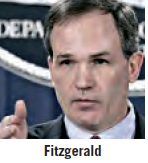 Patrick Fitzgerald made his bones as a terror fighter by prosecuting U.S. vs. bin Laden, the trial of the African Embassy bombers that he and squad I-49 failed to stop. As a reward he was appointed U.S. Attorney in Chicago and got tapped as Special Prosecutor in the Valerie Plame CIA leak investigation. Between 2007 and 2009 he spent 20 months unsuccessfully trying to pulp the hardcover edition and prevent publication of the paperback edition of Triple Cross. We now know that even after learning the identify of the Plame leak source — Bush retainer Richard Armitage – in the early weeks of the investigation, Fitzgerald still subjected the New York Times and Time magazine to a barrage of subpoenas unseen since the McCarthy era – going so far as to force the jailing of ex-Times reporter Judith Miller for 85 days. Until now, Patrick Fitzgerald has been famous for two things: prosecuting al Qaeda members and chilling the press.
Patrick Fitzgerald made his bones as a terror fighter by prosecuting U.S. vs. bin Laden, the trial of the African Embassy bombers that he and squad I-49 failed to stop. As a reward he was appointed U.S. Attorney in Chicago and got tapped as Special Prosecutor in the Valerie Plame CIA leak investigation. Between 2007 and 2009 he spent 20 months unsuccessfully trying to pulp the hardcover edition and prevent publication of the paperback edition of Triple Cross. We now know that even after learning the identify of the Plame leak source — Bush retainer Richard Armitage – in the early weeks of the investigation, Fitzgerald still subjected the New York Times and Time magazine to a barrage of subpoenas unseen since the McCarthy era – going so far as to force the jailing of ex-Times reporter Judith Miller for 85 days. Until now, Patrick Fitzgerald has been famous for two things: prosecuting al Qaeda members and chilling the press.
With the publication of Triple Cross his failure to contain bin Laden’s master spy will now be on the record. Inside there’s a 32 page illustrated timeline documenting Fitzgerald’s negligence. Part One and a selection of documentary appendices can be accessed now. 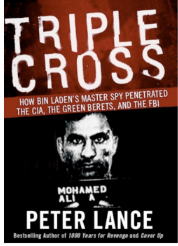



Recent Comments